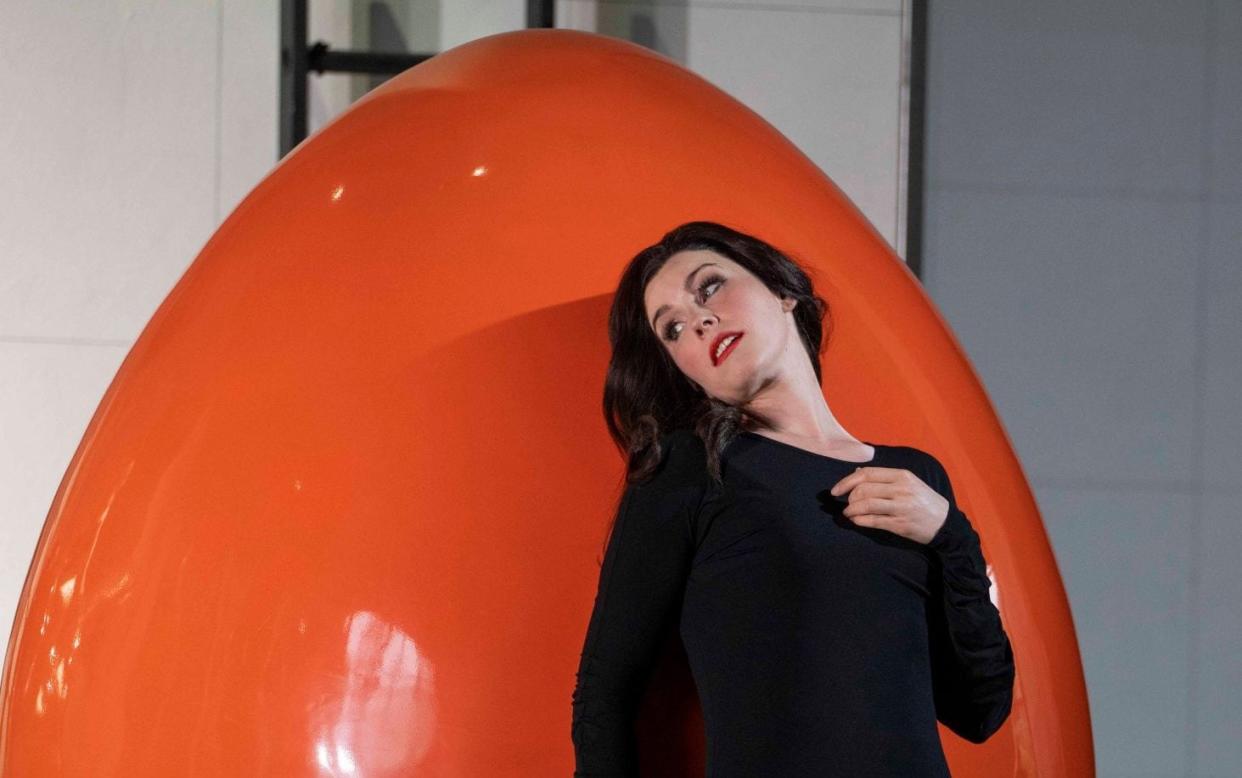Sorcery and romance: Garsington’s Amadigi is an enchanting night at the opera

You’ve got to have a sorceress: if not quite one of the unwritten rules of Baroque opera, it’s certainly true that Handel’s operas would be much poorer without their enchantresses. In Amadigi, she’s Melissa, less familiar to opera-goers than her Handelian sisters Alcina and Armida, but as Garsington Opera’s superb new production shows, she’s no less fascinating.
One of Handel’s more overlooked operas, Amadigi is also more abstract than many, freeing up the imagination — and at Garsington the director-designer Netia Jones takes full advantage of this. No time or place are specified, and the plot, relatively simple by Handelian standards, features just four main characters (a fifth appears, deus ex machina, in the finale). With no chorus, either, the opera proves itself ideal for performance in pandemic times.
Another feature of this striking work (from 1715) is that all the roles are written for high voice, and without any tenors or basses the score has its own, distinctive tone. Less overtly dramatic than many Handel operas, it focuses in each scene on a different facet of romantic love. But there is still spectacle, as the lovesick Melissa invokes magic in her quest to break up the relationship of the knight Amadigi and the princess Oriana. Amadigi faces further trouble when his ally, the prince Dardano, declares his love for Oriana too.
If the music’s emotional depth makes it perhaps an overlooked milestone in Handel’s output, so does the vivid authenticity of the feelings Jones unlocks in her production. The libretto’s contrasts of night and day find expression in the black and white of stage, which along with several shades of grey give the production its overall tone — offset with splashes of orange, including for the giant egg that lends the first act the look of a modern art museum.
Jones’s multi-faceted staging makes use of the Garsington pavilion’s natural light, and she saves her video art for the latter part of the evening, where it animates the stage to spectacular effect. Her trademark kinetic style also involves six dancers; though they are used to articulate emotions (never too obviously), they also shift around the six towers that dominate the set and supply the dance element (choreographed by Anna Morrissey) so integral to Baroque opera.
The staging shirks nothing of the anguish underneath the bravado of the two unrequited lovers, Melissa and Dardano. With her ultimately unsuccessful magic powers, Melissa faces humiliation and a terrifyingly lonely suicide. In her raven-haired portrayal, the soprano Anna Devin certainly shows she is a sorceress with a heart, and her bright soprano has all the fiery power needed for the outbursts of her rage arias. Her tour de force may not quite be matched by Tim Mead’s Darando, a chain-smoking baddie, but he brings depths of colour to his countertenor in a strong performance.
If the more straightforward love of Amadigi and Oriana can be harder to portray interestingly, all the pain of their separation is felt here. The mezzo Sonja Runje is outstanding in a title role, a natural in an unnatural genre, sustaining lines with smooth, resinous tone and moving nimbly. Rhian Lois is a bright, sparky Oriana, and their Act 3 duet is a poignant highlight of the score. The treble Edmund Visintin is secure in Orgando’s brief intervention in the finale.
Cementing its new partnership with Garsington, The English Concert plays crisply under the conductor Christian Curnyn. Some may find his polite, English way of doing Handel a little undramatic, others may mind cuts to the score. But with its excursions into onomatopoeic colouring and dances underpinned with bagpipe-like drone bass, there is never a dull moment in this music.
Until 24 July, at Garsington Opera, Wormsley. Details: www.garsingtonopera.org

